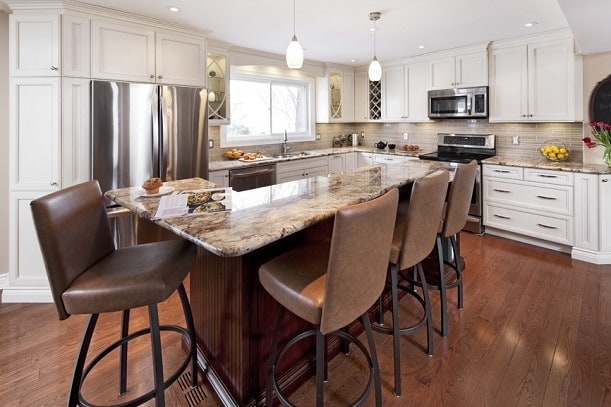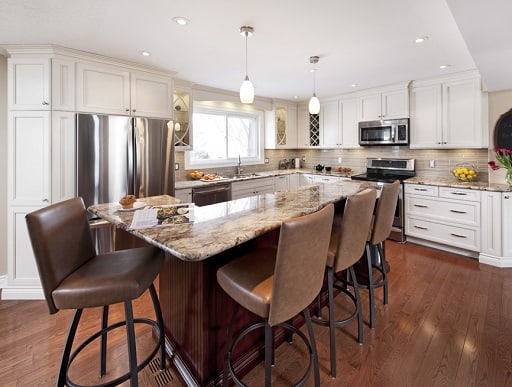
You’ve made countless decisions about your kitchen, and everything is almost done. But don’t forget an oft-overlooked aspect of your kitchen: the seating!
Many homeowners are including an eating space in their kitchens, and that means finding the right kitchen seating for your family to enjoy. But there are so many options: how do you choose one that’s going to fit – literally and figuratively?
Never fear, our 3-step guide to fantastic kitchen seating is here!
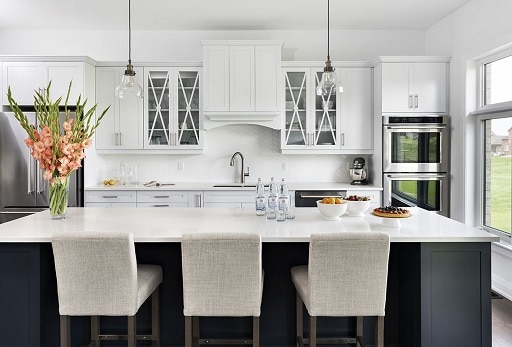
Remember: it’s your kitchen seating, and you should get exactly what you want.
1. Think About the Purpose
First things first: you have to think more seriously about the purpose of your kitchen seating. The purpose will help dictate the style and size.
How Often Are You Going to Be Sitting in the Kitchen?
To help start the process, ask yourself the following questions:
- Are we going to be sitting in the kitchen for every meal?
- Are we going to have friends over for dinner parties a lot?
- Is this where we’re going to do homework, play games, or socialize most of the time?
If you answered yes to any of those questions, you should seriously consider kitchen seating with a back, and maybe some arms. These are much more comfortable for prolonged periods of time. Just think – how many times have you gone out and perched precariously on a backless stool? It’s okay for a short while, but could you manage a 4-course meal or a lengthy game night?
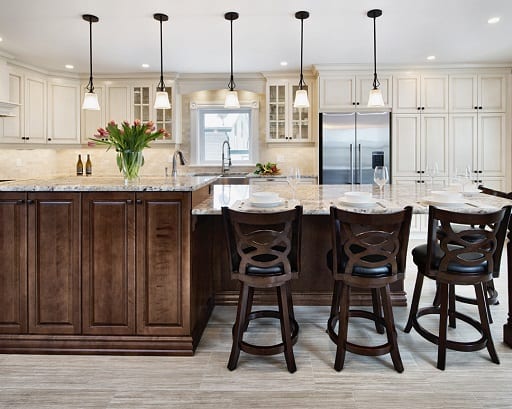
These chairs are a great option for someone who loves to entertain.
What Kind of Chair Suits Your Needs and Wants?
Once you establish what your kitchen seating needs are, you get to focus on the style, which is where the fun really starts to kick in.
Styles and options for kitchen seating include:
- Chair with backs.
- Arm rests – armrests aren’t a common style, but there are no rules when it comes to your kitchen. Just remember that with chair backs and armrests, you’ll have to leave a little more room between chairs.
- Simple stool – these backless, armless options are great for small spaces, and come in a lot of chic designs.
- Swivel – We’ve all sat in a swivel chair, and done a quick rotation just for kicks. Swivel chairs are a popular option for kitchen seating, as it gives you more flexibility to adjust your position. Instead of craning your neck to speak to your neighbour, simply swing around! They also make it easier to get on and off the chair.
- Stationary – stationary chairs are also a great option for kitchen seating, especially if you’re working in an intimate space, as they don’t require as much room as a swivel chair would.
- Adjustable – if you have family members of varying heights who are constantly growing, adjustable chairs can grow with them.
Whatever style you choose, we encourage you to try them all out. You’re the one who’s going to be sitting in the kitchen, and you should gather all the information you need to make an informed decision.
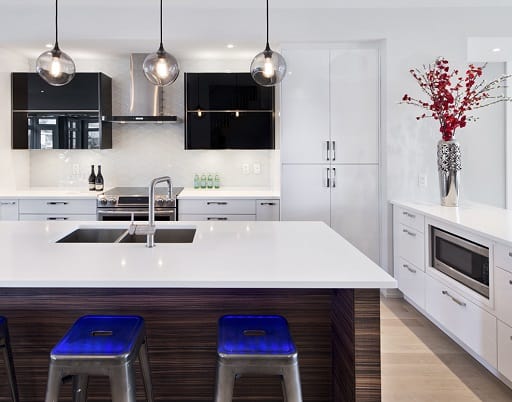
These stools are simple, and add a pop of colour and a different material to this contemporary kitchen design.
2. Choose a Height and Size
The last thing you want to do is fall in love with a chair or stool that is the wrong size for your kitchen island or table. Before you start dog-earring design catalogues or saving photos on your Houzz profile, you should get out your handy tape measure.
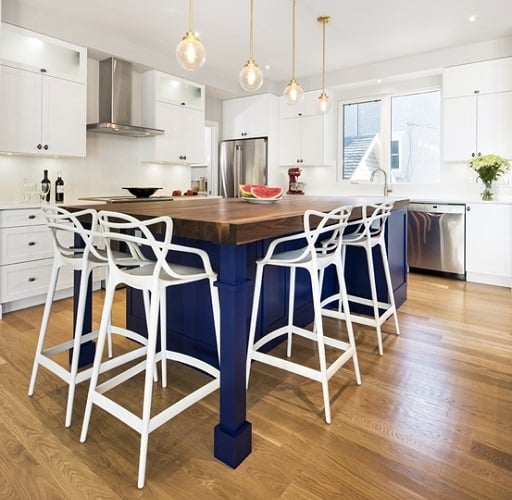
These funky chairs are exactly the right height for this trendy island.
Common Kitchen Seating Heights
It’s easy to determine what height stool or chair you need; just use the measurements below, and find out what height your eating area needs.
Chair
Dining tables are approximately 71 cm – 76 cm (28″ – 30″) tall. A table of this height would require chair style seating with a seat height of 43 cm- 45 cm (17″ – 18″).
Counter
A counter is, on average, 88 cm – 92 cm tall (35″ – 36″). If it is to be used for seating, the seat heights will have to be 60 cm – 66 cm tall (24″ – 26″)
Bar
A bar counter ranges from 101 cm – 107 cm tall (40″ – 42″). Bar seating needs to be at a height of 71 cm – 76 cm (28″ – 30″) would be required to make sitting in the kitchen comfortable.
High Bar
Some bars go even higher. In fact, some go as high as 114 cm – 122 cm (45″ – 48″). While this is a little less common in homes, if you’re breaking the mold, you’ll need a chair with a seat height of 84 cm – 86 cm (33″ – 34″).
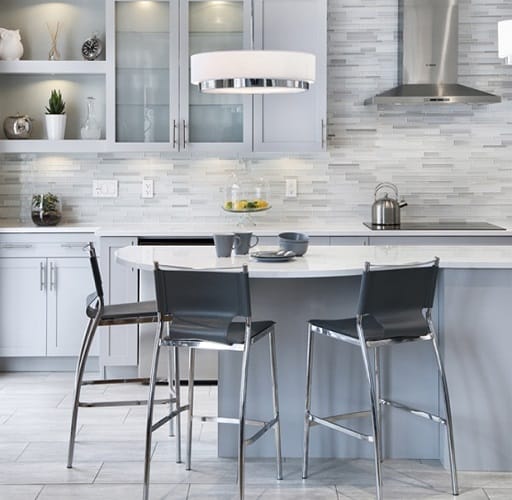
Different options in different heights gives you a lot of choices, like these chic black and metal counter chairs!
Width
Height is only half the equation; you also need to figure out how many seats you can fit around the table, and how wide you want them to be.
A safe estimate is at least 15 cm (6″) of room between each seat for people to eat, drink, and be merry in comfort. This will change depending on the kind of kitchen seating you want.
Measure the parts of your island or table where you want the seating. Use these measurements when you’re picking out chairs, and always keep in mind the width of the chair. On average, this is approximately 42 cm (16.5″).
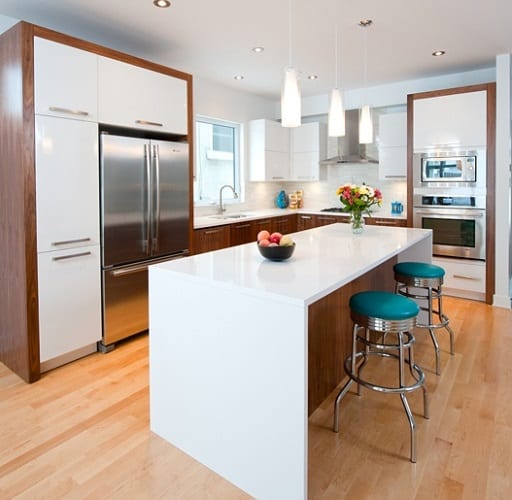
These stools have a good amount of space between them, leaving lots of room for eating!
3. Materials
Now we get into the really fun stuff: what is your kitchen seating going to look like?
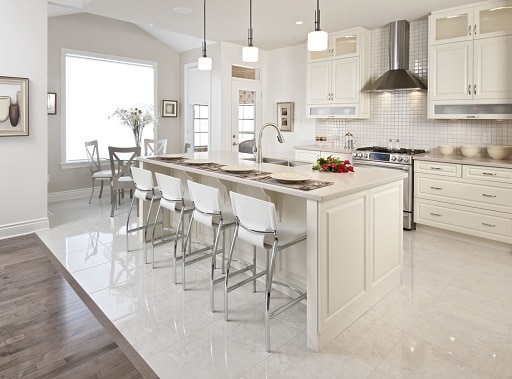
Your kitchen seating could be anything – just use your imagination (and the correct measurements).
Picking materials is fun, but it takes some serious thought. Before you get too excited about suede upholstery or gorgeous wooden frames, ask yourself:
- Are kids or pets going to be using this kitchen seating, and
- Are these seats in your cooking area?
Young kids are going to be hard on the furniture; it’s just a fact. This means that you should avoid upholstered chairs and cushions, as they’re much harder to clean.
This is also true if your chairs are in your cooking area; one wrong move with a sauce pot, and you’re out a chair – or at least stuck with quite the cleaning situation!
Pets can also – unintentionally – cause damage. Their claws can rip through materials like vinyl, or their teeth can leave gouge marks on wooden legs, even though they’re just trying to be friendly and playful. You don’t want your new seating to look old and worn within a few weeks of getting it.
Durable material options for your kitchen seating include leather, metal, and wood (in some cases).
If your home doesn’t have any pets, or your kids are grown and much less messy than they were, you could opt for a nice fabric.
But remember; establish the purpose of your kitchen seating before falling in love with a material.
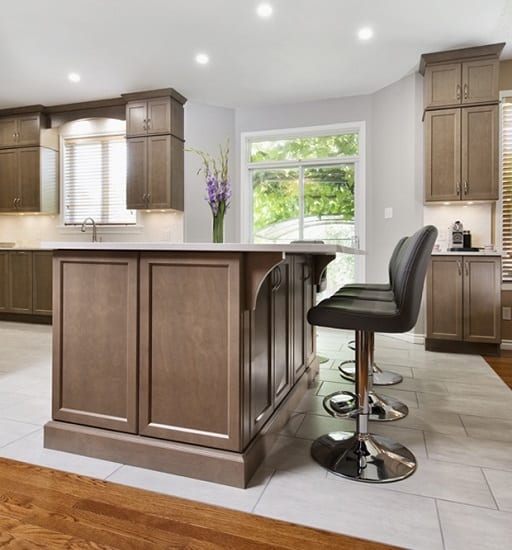
The metal stands and leather seats make for a sturdy perch.
Talk to Your Designer About Style
Style should be uppermost in your mind through every step of choosing your kitchen seating. Whether you want to compliment or contrast with your kitchen style, or follow the trends, you still need to find something that appeals to you and looks good.
When it comes time to actually pick a seat, it can be a little daunting, especially when you don’t want to make a mistake. But that’s where your designer comes in. Once you know what you want, they’ll help make sure your final choice works for you and your kitchen design.
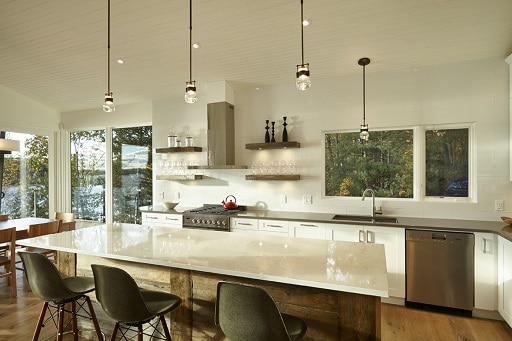
Our designers will help you pick the seating that suits the kitchen.
Dream Chairs for a Dream Kitchen
A chair is never just a chair, just like a new kitchen is never just a new kitchen. It’s a dream come true; and we want every part of that dream to be perfect. That’s why our designers help with every step of the process, including finding the right kitchen seating.
Talk to one of our talented designers to start making all your kitchen dreams a reality.
